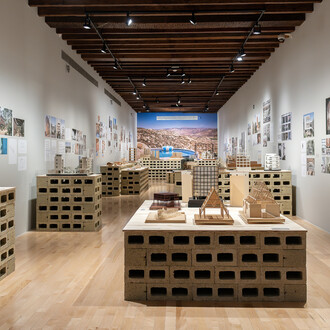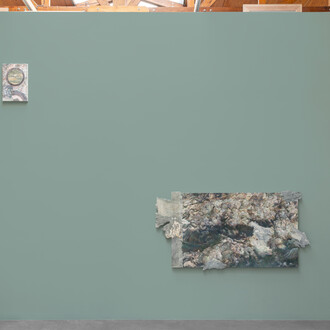Fifty years ago Marcos Kurtycz (Poland, 1934 – Mexico, 1996) arrived at Mexico City, where he changed his engineering career for an artistic practice based on conceptualism, from which he became one of the fundamental precursors of action art and of the incorporation of the body as an artistic tool, with the quality of significant location. In the Mexican environment of the moment it was unusual to take those stances, which led Kurtycz to develop not only his own path within art as an idea but to provide it with an active meaning that would affect the totality of his experimental pursuits.
The first contact of the artist with Mexico remained preserved in his journals and projects: a caustic vision of the brutality of October 2, 1968, and the stark portrait of touristic exoticism, contrary to the popular celebration of the Day of the Dead. In the same notebooks Marcos Kurtycz soon showed his affinity with action art, that extended in a precursory manner to a good part of the artistic trends and movements of the second half of the twentieth century, an aesthetic of dematerialization of the object, not only due to the prevalence given to the idea over the final product —the process rather than the outcome— but due to the ephemeral character of the action and the wide presence of despicable, unstable materials outside the usual repertoire in traditional artistic production, even in the most avant-garde tradition.
This comprehensive dialogue would transform him into an exceptional figure, one of the most complex and versatile in the Mexican scene, parallel to the movement of the groups of the seventies and oblique to the eighties post avant-garde, concealed under the term neo-Mexicanism. By then, Kurtycz had developed a war strategy against the institutionalization and commodification of art, based on the act of “bombing” as a modality of postal art, as well as an intense activity of publishing rituals with its consequence of artists’ books. Although Kurtycz had already become a central figure in Mexican performance with great international visibility; in the nineties, when a new generation of artists affiliated with neo-conceptualisms began to gain momentum, the artist faced illness and he reformulated his pertinacious activity as an actionist with a new war cycle fought by his snake alter ego, a being able to change its skin and take life by assault.












